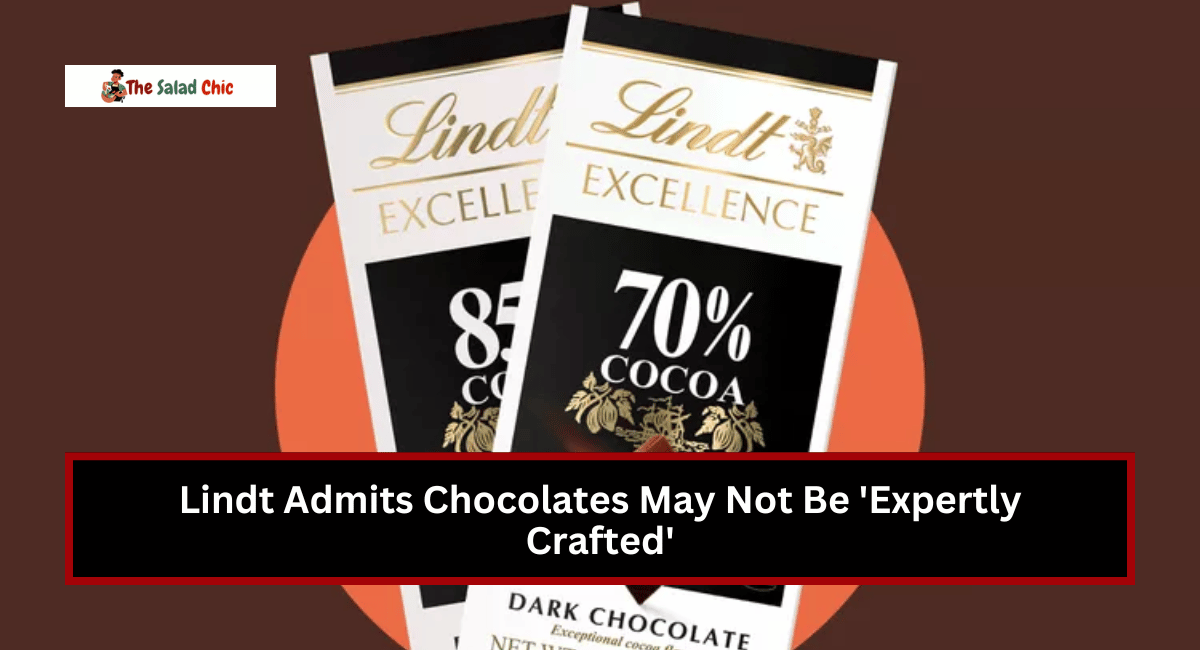Lindt, the renowned Swiss chocolate maker, is at the center of a class-action lawsuit after admitting that its chocolates may not be as “expertly crafted” as advertised.
This revelation has sparked significant controversy, especially after Consumer Reports revealed concerning findings about the chemicals in Lindt’s dark chocolate products. Here’s a breakdown of the case and what it means for consumers.
The Lawsuit Origins High Levels of Lead and Cadmium
The controversy began in 2022 when Consumer Reports conducted a study on the levels of heavy metals in chocolate. The report revealed that Lindt’s Excellence Dark Chocolate 85% Cocoa contained dangerously high levels of lead, while its 70% Cocoa variant contained significant amounts of cadmium.
These findings weren’t exclusive to Lindt; several other chocolate brands were also called out for containing these harmful chemicals. However, Lindt is the only company currently facing a class-action lawsuit over these issues.
The Class-Action Lawsuit Allegations of False Advertising
In 2023, a group of U.S. consumers filed a class-action lawsuit accusing Lindt of misleading customers with their marketing. The lawsuit alleges that Lindt violated labeling rules in states such as Alabama, California, Florida, Illinois, Nevada, and New York by falsely advertising its chocolates as premium products.
The plaintiffs claim that Lindt’s marketing, which emphasizes its chocolates as “expertly crafted with the finest ingredients,” misled them into paying high prices for products that didn’t meet those promises.
Lindt’s Legal Defense: “Puffery” Claims Spark Outrage
In an attempt to have the case dismissed, Lindt’s lawyers argued that phrases like “excellence” and “expertly crafted with the finest ingredients” were “puffery.”
In legal terms, “puffery” refers to exaggerated or boastful advertising claims that no reasonable consumer would take literally. The lawyers argued that these statements were not intended to be taken as factual representations of the chocolate’s quality.
This defense did not sit well with the public. Many took to social media to express dissatisfaction with the brand’s response, accusing Lindt of undermining its marketing claims.
Even the Swiss newspaper NZZ am Sonntag criticized the company, suggesting that by labeling its marketing as “puffery,” Lindt had exposed the “quality” of its products as nothing more than a transparent marketing gimmick.
Lindt Responds to the Backlash
Following the backlash, Lindt issued a statement clarifying its position. A company representative explained that the “puffery” defense was a technical legal argument used to challenge the specific claims made by the plaintiffs.
The company reiterated its commitment to the quality of its products, stating that its chocolates are still “expertly crafted with the finest ingredients.”
Despite this clarification, the court ruled against Lindt’s motion to dismiss the lawsuit. The legal proceedings are expected to continue, and Lindt must defend its claims in court.
Impact on Lindt’s Reputation
The lawsuit and the subsequent public reaction have damaged Lindt’s reputation, particularly in the eyes of consumers who were once loyal to the brand. The revelation that the company’s marketing claims might be exaggerated boasts has shaken the trust of many.
Additionally, the finding of harmful chemicals in Lindt’s chocolates adds to the growing concerns about the safety of food products and the transparency of food labeling.
While Lindt insists that its products meet high-quality standards, the company’s use of the “puffery” defense has left many questioning the true nature of its chocolate.
What This Means for Consumers
For consumers, the controversy raises important questions about food labeling and the accountability of major brands.
While Lindt is not the only chocolate manufacturer with heavy metals in its products, the company’s failure to take responsibility for its marketing claims has made it a target in the ongoing debate about the ethical practices of food manufacturers.
Consumers who previously trusted Lindt for its premium products may now be more cautious about their purchases. As the legal case continues, this issue will clearly have lasting implications for both Lindt and the chocolate industry as a whole.
FAQs
What is the class-action lawsuit against Lindt about?
The lawsuit accuses Lindt of false advertising, claiming that the company misled consumers by advertising its chocolates as “expertly crafted with the finest ingredients” despite the high levels of lead and cadmium in some of its products.
What did Consumer Reports find about Lindt’s chocolates?
Consumer Reports found that Lindt’s Excellence Dark Chocolate 85% Cocoa contained high levels of lead, while the 70% Cocoa variety contained significant amounts of cadmium. These findings were part of a more extensive study on heavy metals in chocolate.
What is “puffery,” and why is it important?
“Puffery” refers to exaggerated advertising statements that are not meant to be taken literally. In its defense, Lindt argued that phrases like “expertly crafted” were simply puffery and not intended as factual claims about the chocolate’s quality.
Is Lindt the only chocolate brand with heavy metals in its products?
Lindt is one of many brands that have heavy metals in its chocolate. Several other companies were cited in the Consumer Reports study, but Lindt is the only one currently facing a class-action lawsuit.
How does this lawsuit affect Lindt’s reputation?
The lawsuit and the defense strategy have led to widespread public backlash. Many consumers feel misled by the company’s marketing claims, which could hurt Lindt’s reputation as a premium chocolate maker.
READ MORE: Aldi’s $7 Holiday Stunner Is $90 Williams Sonoma Version

